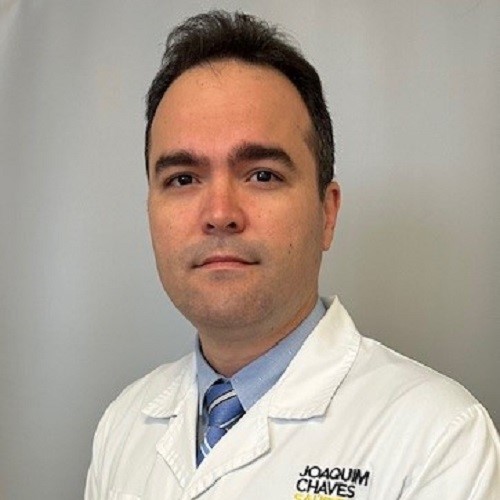Tonsils and adenoids are part of the body’s defense system, but they can also be a frequent source of infections. Learn what they are and when surgery should be considered.
Tonsils and adenoids are the first line of defense that infectious agents encounter when trying to enter the human body, but they can become a health and quality of life issue when they get infected or become obstructive. Discover what they are, when they become a problem, and what to do in such cases.
What are adenoids and tonsils and what are they for?
Adenoids are a cluster of lymphoid tissue located in the nasopharynx (the posterior region of the nose), and tonsils are two encapsulated oval-shaped tissue structures situated on either side of the throat. Their function, along with various other structures located in the pharyngeal walls, is to produce defense cells and antibodies necessary to combat viral and bacterial infections that affect our body through the respiratory tract. Tonsils are visible, but adenoids cannot be observed without the use of instruments or special examinations (e.g., X-ray of the pharyngeal cavity) since they are located behind the nasal cavity and above the palate.
The adenoids and tonsils increase in size between 2 and 5 years of age, which is when the first contacts with microorganisms occur. After that period, their volume starts to decrease. By the age of 13-14, the adenoids undergo atrophy and practically disappear in adulthood.
The tonsils and adenoids, along with other structures located in the front line of the immune system's defense, are naturally susceptible to infections and inflammations. Most of these infections are viral and self-limiting, being quickly resolved by the immune system, which progressively becomes more effective throughout childhood and adolescence.
Bacterial infections, whether in the adenoids or tonsils, often present with more pronounced clinical symptoms, including fever, nasal obstruction, and the production of thick, greenish mucus in the case of adenoids, and sore throat, high fever, and difficulty swallowing in the case of tonsils. Frequently, both structures can be infected, but tonsillar infection is generally limited to the tonsils.
In some children and adolescents, the condition can become recurrent or even chronic, resulting in persistent nasal obstruction, snoring, facial and dental development alterations, growth delay, and recurring ear infections.
The enlargement of the adenoids is also associated with serous otitis media. Due to this enlargement, proper ventilation is hindered, leading to the accumulation of fluid in the middle ear. Additionally, it can also cause hearing loss. However, both situations are reversible and improve with the resolution of nasal obstruction.
When do adenoids and tonsils become a problem?
There are some signs that may indicate compromised adenoid or tonsil function. The most common ones include:
- Persistent nasal obstruction.
- Snoring and sleep apnea, leading to restless sleep, fatigue, headaches, daytime sleepiness, and poor school performance.
- Recurrent infections such as tonsillitis, sinusitis, or ear infections, accompanied by hearing loss and language delay.
- Mouth breathing, resulting in dry lips, mouth, and throat, increased bacterial plaque, and bad breath.
- Developmental delay.
- Facial and orthodontic alterations, such as a short and lifted upper lip or protrusion of the upper incisor teeth.
These signs are often a consequence of an abnormal increase in size and repeated infections of the adenoids and tonsils, with implications for the overall health of the child and their physical and psychosocial development.
A child presenting these symptoms should be referred to an Otorhinolaryngology consultation in order to establish a proper diagnosis and determine appropriate treatment in a timely manner.
The treatment of the adenoid and tonsil diseases
The treatment of adenoid and tonsil diseases depends on each individual case. In the vast majority of cases, appropriate medical treatment effectively resolves these conditions. The use of decongestants, antihistamines, anti-inflammatories, and, in the case of infections, antibiotics, sometimes combined with immune boosters, allows for good control of the diseases, which generally become much less frequent as the child grows.
When to operate on the adenoids and tonsils?
Many of the indications for surgery, in the past, no longer apply nowadays, thanks to the increasingly effective and safe action of antibiotics. Nowadays, it is possible to clinically control respiratory tract infections, significantly reducing the need for surgery. However, there are still some situations in which surgical intervention may be the most appropriate, both in children and adults
Indication in children
The indication for surgery in children is still frequent, for two reasons:
- Chronic or recurrent infections that are difficult to control through systematic use of antibiotics and other treatments, leading to a high rate of school absenteeism for the child and professional absenteeism for the parents. In this case, after exhausting non-invasive options, the decision to undergo surgery should be discussed with the pediatrician and the otolaryngologist.
- Suspected sleep apnea, which is difficulty breathing through the nose that becomes more intense during the night. There may be moments when the child momentarily stops breathing. This condition can cause loud snoring, restless sleep, and exhaustion. Similar to the previous point, the decision for surgery in this case should be carefully considered in consultation with both medical specialties.
Indication in adults
In certain situations, more frequently in teenagers and young adults, the infection of the tonsils becomes unresponsive to antibiotics that are typically effective in these cases. After exhausting medical measures to control the situation, surgery becomes the correct and definitive option for curing these infections, regardless of age.
Surgical removal of the adenoids and tonsils should be considered whenever their size causes obstruction of the airways, leading to the development of snoring and sleep apnea.
Therefore, in the face of the failure of medical treatment using general and pharmacological measures, the otolaryngologist will evaluate the patient's clinical history of recurrent infections and airway obstruction, as well as the impact of these on the patient's health and quality of life, surgical treatment will be considered to resolve the situation. It is important to note that there is no ideal age for this intervention, but rather the right time for each child or adult, depending on the severity of the case.
Tonsillectomy/adenoidectomy is a highly effective surgical procedure with limited risk and typically rapid recovery. It is worth noting that the surgery does not compromise the immune system since many other structures and tissues participate in that system. The intervention is not associated with an increased incidence of infections, asthma, or allergic diseases, nor does the presence of allergies contraindicate the operation.
Please clarify your doubts with your otolaryngologist.
Joaquim Chaves Saúde, count on us
An accurate evaluation of clinical conditions related to adenoids and tonsils is crucial for therapeutic success. Joaquim Chaves Saúde offers an experienced and specialized team in Otorhinolaryngology, providing a comprehensive and effective therapeutic approach. This specialty is available at the Moscavide Clinic, Surgical Clinic in Carcavelos, Cascais Clinic, Miraflores Clinic, Entrecampos Clinic and Sintra Clinic. You can schedule your appointment here.




